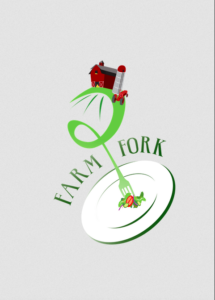Simply stated, the term means that the “food on the table is sourced directly from a specific farm without having to go through a distributor or a store.” It is also referred to as “farm to table.” The process in effect cuts out a middle person or distributor between the producer of the food and the consumer. The farmer sells products to the consumer or, more likely, to a restaurant which sells it to the consumer, eliminating transporting the food from a distant place through several layers of distributors.
Benefits from such an arrangement include access to fresher products, with more vitamins and flavor, but also less stress on transportation systems. Instead of shipping food in large trucks across the country or flying food across the globe, and then onto large and then smaller trucks, getting food from local sources reduces transport and greenhouse gas emissions.

The farm2fork provides a more sustainable food system that contributes to lower GHG emissions, healthier life style, and more value to growers of the food rather than distributors. It also allows for a much shorter supply chain, the importance of which we have seen as a result of the Covid-19 pandemic.
Some further ideas to explore on farm2fork;
Do farmers earn more income from farm2fork than from traditional distribution systems? Why or why not?
Is farm2fork available in your area? If not, why not?
Is farm2fork limited to certain food products? If so, which products and why?
Sources:
European Commission, Farm to Fork strategy: for a fair, healthy and environmentally-friendly food system bit.ly/31aklMd
What Does Farm-to-Fork Mean? Hand Held Catering. bit.ly/3ByiMEi
Farm to Fork Initiative, www.farmtoforkinitiative.org


No comments yet, add your own below